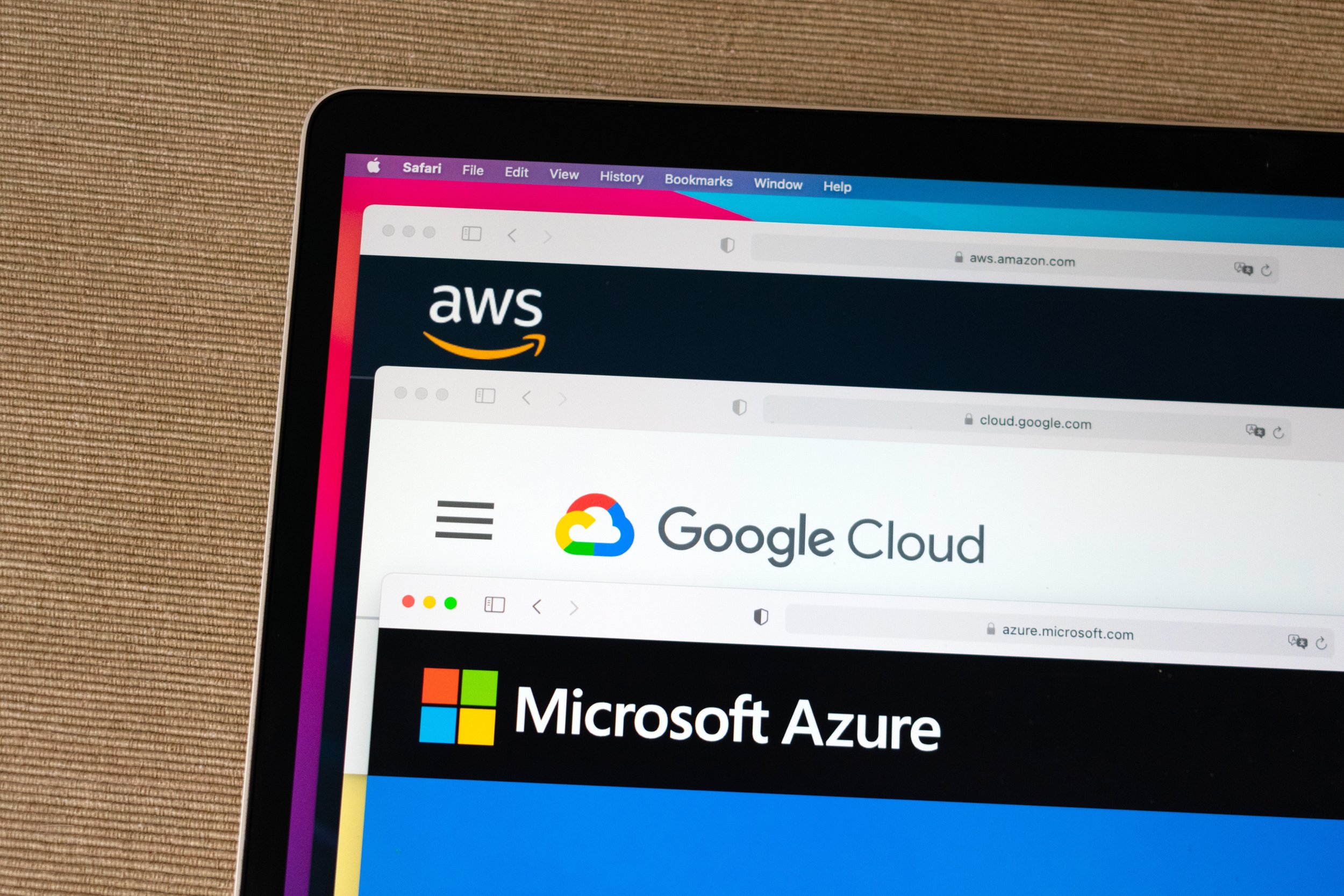
Why AWS?
An overview of benefits & offerings

What was the last movie you caught on Netflix? Or was it on Prime? 📺
Perhaps you watched it on a monitor bought from the Amazon store. Possibly from the comfort of your Airbnb retreat 🏠
All of these share one thing in common - they’re all using Amazon Web Services to deliver their business.
Amazon Web Services (AWS) is the biggest player amongst cloud vendors
Lemme throw some figures at you.
According to analysts, AWS maintains a market share of more than 30%. How much is that? Year-over-year quarterly net sales grew 33% from $14.8 billion to $19.7 billion in 2022. Not bad. And since they emphasis growth over profit, it’s likely that AWS will eventually leave Amazon’s e-commerce business behind for something much, much larger.
Competitors will also thrive, yes. Namely IBM, Google & Microsoft. Competition is healthy and multi-cloud architectures are often a good thing. Even old dinosaurs such as Oracle & Cisco are throwing their hat into the ring. But Amazon, with its head-start in the scene have all the momentum, culture and talent to stay afloat as the market leader for a foreseeable future.
With a virtually infinite addressable market made up of - well, pretty much every business on Earth using the internet, big or small, startup or established, commercial or governmental - AWS is on a straight trajectory to become the largest organisation in the world. That’s not wishful thinking, it’s actually very likely.
AWS data centers are distributed worldwide in North & South America, Europe, Asia, and Australia. With many more in the pipeline - actually, at the time of writing this, a new region has opened close to my old house in Abu Dhabi. But the cloud does not consist of hardware and computing power alone. Software is part of every cloud platform and makes the difference for you, as a customer who aims to provide a valuable experience to your end-users.
The research firm Gartner has yet again classified AWS as a leader in their Magic Quadrant for Cloud Infrastructure as a Service. Gartner’s Magic Quadrant groups vendors into four quadrants: niche players, challengers, visionaries, and leaders, and provides a quick overview of the cloud computing market. Being recognized as a leader attests AWS’s highspeed and high quality of innovation.
With AWS, we’re hands-down in the safest hands 🤝
Psssst!…
Too long, didn’t read?
Gotcha covered
Amazon Web Services (AWS) is a platform of web services. Offers solutions in computing, storage, and networking at different layers of abstraction
-
You can use these services to host websites (such as this), run enterprise applications, and process tremendous amounts of data.
-
Services on AWS work well together: you can use them to replicate your existing local network setup, or start with a clean slate.
The pricing model is pay-per-use!
-
These web services are accessible via the internet’s established protocols (such as HTTP) to be used by machines & people.
-
For example, you can use block-level storage (a low level of abstraction) or a highly distributed object storage (a high level counterpart) to store your data.

Ever get that feeling of déjà vu?

Ever get that feeling of déjà vu?

Ever get that feeling of déjà vu?
Comparing alternatives 🔍
-
A worldwide infrastructure that provides computing, networking and storage capabilities
-
An IaaS offering that provides virtual machines on-demand: Amazon EC2, Azure Virtual Machines, Google Compute Engine
-
Highly distributed storage systems able to scale storage and I/O capacity without limits:
Amazon S3, Azure Blob storage, Google Cloud Storage -
Benefitting from economies of scale, trading CAPEX for OPEX with a pay-as-you-go pricing
These cloud providers share a lot in common. They all have:
AWS isn’t the only cloud computing provider.
Microsoft Azure & Google Cloud Platform (GCP) are other major cloud players.
But what are the differences between the cloud providers? 🤔
AWS is the market leader in cloud computing, offering an extensive product port- folio. Even if AWS has expanded into the enterprise sector during recent years, it is still obvious that AWS started with services to solve internet-scale problems. Overall, AWS is building great services based on innovative, mostly open source, technologies. AWS offers complicated but rock-solid ways to restrict access to your cloud infrastructure.
Microsoft Azure provides Microsoft’s technology stack in the cloud, recently expanding into web-centric and open source technologies as well. It seems like Microsoft is putting a lot of effort into catching up with Amazon’s market share in cloud computing.
Google Cloud Platform is focused on developers looking to build sophisticated distributed systems. Google combines their worldwide infrastructure to offer scalable and fault-tolerant services (such as Google Cloud Load Balancing). The GCP seems more focused on cloud-native applications than on migrating your locally hosted applications to the cloud, in my opinion.
In the 2022 Gartner Magic Quadrant, AWS is recognized as a Leader and has been placed highest on Ability to Execute. In this report, discover why Gartner positioned AWS as a Leader based on its ability to execute and completeness of vision:
How does AWS drive business growth? 💹
-
Giving you easy access to a broad range of technologies for faster innovation. Spin up resources as you need them from infrastructure services (compute, storage, databases, IoT, machine learning, etc). The cloud’s the limit!
-
With AWS, you don’t have to overprovision resources up-front to handle peak levels of future business activity.
Instead, it’s a utility like water (Amazon Water Services, as my sister first thought). Take the required amount only. You can scale resources up/down to instantly grow & shrink capacity as the workloads’ needs changes.
-
AWS allows you to trade CAPEX (capital expenses -data centres & physical servers) for variable expense. Now, resources consume only what they need, and when.
Not only this, but pay less for variable expenses overall due to economies of scale. No need to build an entire hotel if you’re only staying for one night.
Cloud allows you to shift your focus away from grappling the IT challenges, to instead divert your time & money into what matters most - differentiating your business.
-
Security is partially delegated to cloud provider.
In the case of a MySQL database service, you won't have to update and patch the latest update version, the cloud provider does that for you.
By default, most of cloud services are using default strong encryption for highly restricted data.
-
With the cloud, you can expand to new geographic regions and deploy globally in minutes. AWS has infrastructure across continents, so you can deploy application in multiple physical locations with a few clicks.
Putting applications in closer proximity to end-users reduces latency and improves their experience, as well as being ready for any disaster recovery in an incident inside data centre (malicious damage, powercuts, Godzilla uprisings, etc).
-
Usage is measured. Pay only for what you consume. Resources can be monitored, controlled, reported and billed. No need to buy or license in advance.
On-demand self-service 🤳
Resource pooling 🏊♂️
Wide range of network access 🦾
Rapid elasticity 📈
Measured Service 🔍
Where to get started? ⛳
To help people get started, AWS takes a tiered approach into the cloud. First place to start is with the Free Tier in which many services are free of charge for the first 12 months.
Start small, begin experimenting and find the right solution that works for you. As your adoption grows, clients become paying customers on a ‘pay for use’ subscription model. This approach eases the integration and lowers the upfront cost for new users.
No capital expenses, granular pay-for-use billing, and numerous buying options make AWS attractive to a wide array of customers of all sizes.











